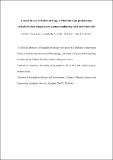Files in this item
A novel in situ diffusion strategy to fabricate high performance cathodes for low temperature proton-conducting solid oxide fuel cells
Item metadata
| dc.contributor.author | Hou, Jie | |
| dc.contributor.author | Miao, Lina | |
| dc.contributor.author | Hui, Jianing | |
| dc.contributor.author | Bi, Lei | |
| dc.contributor.author | Liu, Wei | |
| dc.contributor.author | Irvine, John T.S. | |
| dc.date.accessioned | 2019-04-23T23:37:37Z | |
| dc.date.available | 2019-04-23T23:37:37Z | |
| dc.date.issued | 2018-06-14 | |
| dc.identifier | 253402672 | |
| dc.identifier | 887d43ce-5e77-48ca-b7f5-e8c13be6b455 | |
| dc.identifier | 85048249060 | |
| dc.identifier | 000437106300030 | |
| dc.identifier.citation | Hou , J , Miao , L , Hui , J , Bi , L , Liu , W & Irvine , J T S 2018 , ' A novel in situ diffusion strategy to fabricate high performance cathodes for low temperature proton-conducting solid oxide fuel cells ' , Journal of Materials Chemistry A , vol. 6 , no. 22 , pp. 10411-10420 . https://doi.org/10.1039/c8ta00859k | en |
| dc.identifier.issn | 2050-7488 | |
| dc.identifier.other | ORCID: /0000-0002-8394-3359/work/68280762 | |
| dc.identifier.uri | https://hdl.handle.net/10023/17584 | |
| dc.description | This work was supported by the National Natural Science Foundation of China (Grant No.: 21676261, U1632131 and 51602238). The authors acknowledge the financial support of the Royal Society of Edinburgh for a RSE BP Hutton Prize in Energy Innovation and EPSRC Platform grant, EP/K015540/1. We also would like to thank the support from the China Scholarship Council (No. 201606340101). | en |
| dc.description.abstract | Developing new low-cost high-performance cobalt-free cathode materials for low temperature proton-conducting solid oxide fuel cells (H-SOFCs) has been an imperative topic. In response to this challenge, we herein develop a novel in situ Pr diffusion strategy based on a Sm0.2Ce0.8O2-δ-Pr(Pr0.5Ba1.5)Cu3O7-δ (SDC-PBCu, 3:7 wt%) compound, to achieve a perovskite-related proton-blocking composite cathode (PBCC) Ce1-xPrxO2-δ-Ba2CeCu3O7.4-Sm2Ba1.33Ce0.67Cu3O9-CuO (PDC-BCC-SBCC-CuO) for BaZr0.1Ce0.7Y0.2O3-δ-based H-SOFCs. The single cell achieves a remarkable performance with a maximum power density (MPD) of 1000 and 566 mW cm-2, corresponding to the interfacial polarization resistance (RP) of 0.037 and 0.188 Ω cm2 at 700 and 600 °C, respectively. The XRD results demonstrate that the PBCu phase disappears after the calcination of the mixed SDC-PBCu composite powder at 900 °C, with the formation of four new phases including fluorite structured PDC, orthorhombic layered material BCC, tetragonal perovskite-related SBCC and a small quantity of metallic oxide CuO, being favorable for a superior cathode performance. The ascendant electrochemical performance including the very high MPD and the lower RP obtained here indicate that the quaternary cobalt-free PBCC PDC-BCC-SBCC-CuO is a preferable alternative for high-performance low-temperature H-SOFCs. | |
| dc.format.extent | 10 | |
| dc.format.extent | 2019030 | |
| dc.format.extent | 518189 | |
| dc.language.iso | eng | |
| dc.relation.ispartof | Journal of Materials Chemistry A | en |
| dc.subject | QD Chemistry | en |
| dc.subject | Chemistry(all) | en |
| dc.subject | Renewable Energy, Sustainability and the Environment | en |
| dc.subject | Materials Science(all) | en |
| dc.subject | NDAS | en |
| dc.subject | SDG 7 - Affordable and Clean Energy | en |
| dc.subject.lcc | QD | en |
| dc.title | A novel in situ diffusion strategy to fabricate high performance cathodes for low temperature proton-conducting solid oxide fuel cells | en |
| dc.type | Journal article | en |
| dc.contributor.sponsor | EPSRC | en |
| dc.contributor.institution | University of St Andrews. School of Chemistry | en |
| dc.contributor.institution | University of St Andrews. EaSTCHEM | en |
| dc.identifier.doi | 10.1039/c8ta00859k | |
| dc.description.status | Peer reviewed | en |
| dc.date.embargoedUntil | 2019-04-24 | |
| dc.identifier.grantnumber | EP/K015540/1 | en |
This item appears in the following Collection(s)
Items in the St Andrews Research Repository are protected by copyright, with all rights reserved, unless otherwise indicated.


